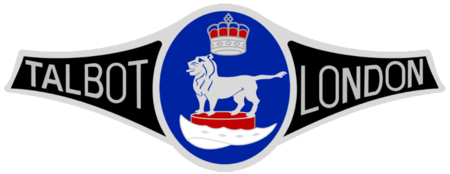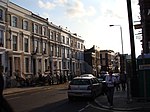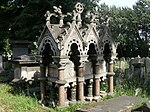Clément-Talbot

Clément-Talbot Limited was a British motor vehicle manufacturer with its works in Ladbroke Grove, North Kensington, London, founded in 1903. The new business's capital was arranged by Charles Chetwynd-Talbot (whose family name became the brand-name and whose family crest became the trademark), shareholders included automobile manufacturer, Adolphe Clément, along with Baron Auguste Lucas and Emile Lamberjack, all of France.The shareholders sold it in late 1919 to the company that became S.T.D. Motors. It kept its separate identity making cars designed specially for it or by its employees until 1934. After S.T.D.s financial collapse it was bought by the Rootes brothers. When Rootes acquired Clement-Talbot's parent company Darracq & Co. in 1935, it kept the Talbot name as a brand, then establishing Sunbeam-Talbot Limited in 1938.
Excerpt from the Wikipedia article Clément-Talbot (License: CC BY-SA 3.0, Authors, Images).Clément-Talbot
Barlby Road, London North Kensington (Royal Borough of Kensington and Chelsea)
Geographical coordinates (GPS) Address Nearby Places Show on map
Geographical coordinates (GPS)
| Latitude | Longitude |
|---|---|
| N 51.52318 ° | E -0.2201 ° |
Address
Shaftesbury Centre
Barlby Road 85
W10 6AZ London, North Kensington (Royal Borough of Kensington and Chelsea)
England, United Kingdom
Open on Google Maps






